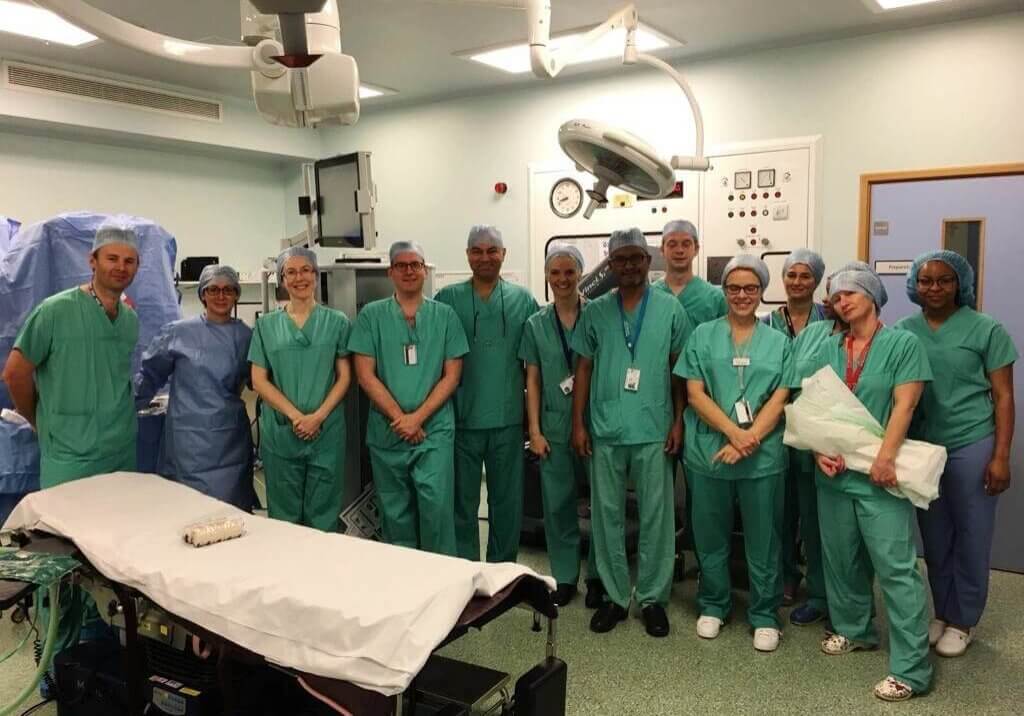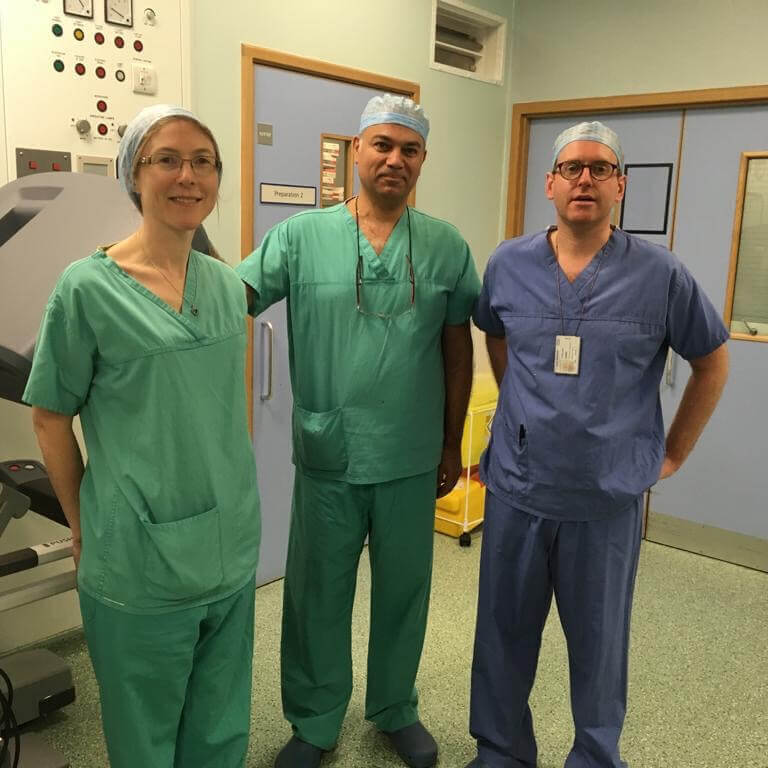Robotic Surgery
Our surgeons have been performing robotic weight loss operations using the Da Vinci robot since 2017, having undergone extensive training in Orleans and Strasbourg (France). The Optimise Weight Loss team has performed more robotic gastric bypass operations than any other unit in the United Kingdom and has pioneered this groundbreaking technology in sleeve gastrectomy and antireflux operations.
Using the robot provides the surgeon with an enhanced view of the operative field, and allows for tiny precision movements, which is particularly critical when suturing is needed. After a robotic procedure, the patient can expect less post-operative pain, and an earlier return to normal function.


FAQs
How does the robotic bypass operation compare with the laparoscopic approach?
Both operations will result in a small stapled gastric pouch being joined to a length of small bowel. The robotic operation involves a sutured join (anastomosis), whereas in the laparoscopic operation, this is stapled. There is some evidence that the sutured join is less likely to leak and may result in enhanced weight loss.
Is there any difference in the post-operative follow-up for the two different approaches?
No, in both cases, you would need to gradually introduce thickened fluids, soft and textured foods, as per your dietitian’s advice. You will need to take nutritional supplements after both laparoscopic and robotic operations. Your follow-up appointments with our surgeons and team will be outlined to you before you have your operation.
